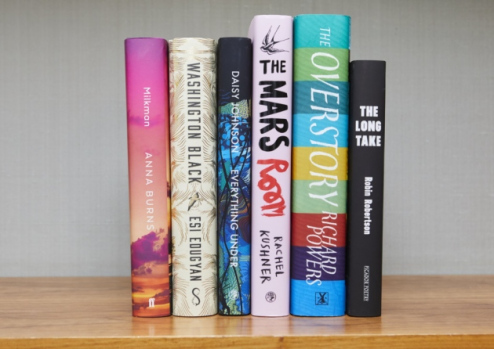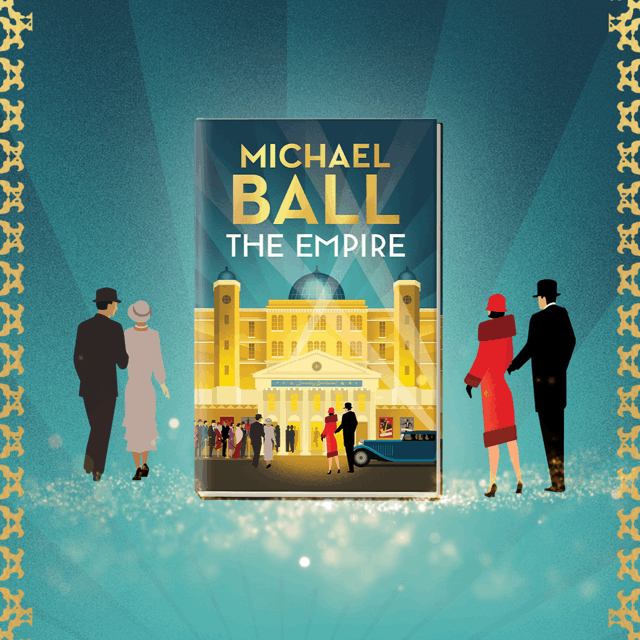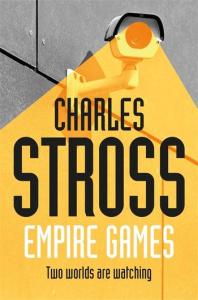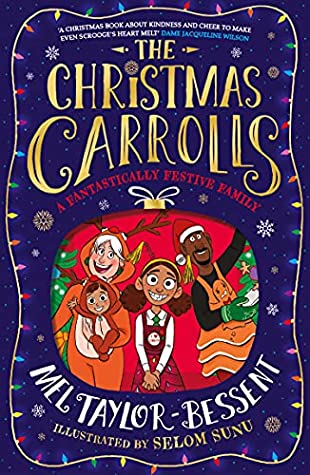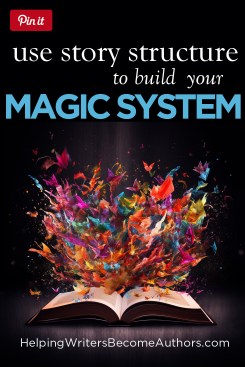 From KMW: If you’ve ever written a story that falls into the broad genre of speculative fiction (fantasy, science fiction, and all their many many subgenres), then you may have faced one of the main challenges of the genre: creating a magic system.
From KMW: If you’ve ever written a story that falls into the broad genre of speculative fiction (fantasy, science fiction, and all their many many subgenres), then you may have faced one of the main challenges of the genre: creating a magic system.
A magic system can be anything from a thoroughly elaborate high concept plot-driver such as in Brandon Sanderson’s fantasy novels, or it can be just a simple tweak on reality as in time-travel stories. Either way, the two most important guidelines for a well-executed magic system are:
- The rules must remain consistent throughout the story.
- The magic system must enhance the plot rather than detract from it.
That’s why I’m pleased to bring you a post from C.R. Rowenson, author of The Magic System Blueprint, in which he discusses key points for integrating your existing magic system with your plot structure.
***
What’s up, storyteller? Are you ready to talk about your story’s magic system? Because it’s time to talk about magic!
Crafting a quality magic system that connects well with your story is tricky business. On the one hand, much like writing in general, there’s no wrong way to go about this. That also means there’s no one right way either. Some people can start with nothing, reach deep into the yawning cosmos of creativity, and craft a complete magic system right from the start. You might not work that way. You might need to start with characters or the setting or the plot itself.
So if you’ve been struggling with your magic system, you might just be looking in the wrong places. Stop breaking open random proverbial stones looking for that one gorgeous geode. Let’s get grimy, and talk through how you can mine your outline and your story’s structure for those magic-system gems you’ve been looking for.
The 2 Things You Need to Create Your Story’s Magic System
Before you go tearing off with your literary pickaxe, we need to make sure you’ve got what you need to be successful here. Just charging in, swinging wildly, is a good way to end up with a pile of rubble.
What do you need before you can start mining for your story’s magic system? It’s a pretty short list. You really just need two things:
1. A concept for your magic system.
2. A filled-in story structure.
1. The Magic System Concept
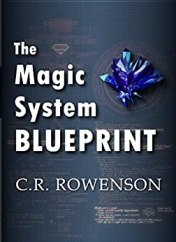
The Magic System Blueprint by C.R. Rowenson (affiliate link)
The concept for your magic system doesn’t need to be anything crazy. You’re just looking for that central nugget, that core idea around which the rest of the system can form. When I talk about magic systems, I usually call this the Seed Crystal for your magic system. You can also think of it as the north star, the elevator pitch, or the central theme.
Concepts range from simple ideas like “elemental magic on a spaceship” to complex ones like “a crew of thieves using metal-based magic to overthrow a god-emperor.” The exact wording doesn’t matter, you just need to know what your magic is going to be about.
2. The Outline/Story Structure

Structuring Your Novel (Amazon affiliate link)
You’re here right now, so I’m assuming you’re quite familiar with outlines and story structure at this point. If not, you may need to put this mining effort on pause while you read through some of the post series or books on this website.
This doesn’t mean you need a full beat-by-beat outline. You don’t even need things planned to a chapter level! As long as you know what you want happening at the major points in your story, then this mining operation is open for business… almost.
4 Fast Tips for Expanding Your Your Story’s Magic System
This process helps you find all those little gems and shiny bits you can add into your magic system to make it more interesting and awesome. That can come in a variety of forms, depending on how far along you are with the development of your magic system and your story.
While you’re working through this, try to do, or at least allow for, the following:
1. Create New Things
Add rules and limitations to your story’s magic system. Find new magical effects the magic can generate. Add characters and locations to better address what you’re building.
2. Strengthen What’s Already There
Amplify the emotion and tension in the story. Reinforce the core concept of the magic system. Link concepts and events together with logic and patterns.
3. Add Specifics
Turn generic plot points into fully formed events. Dive into the minutiae of your magic limitations. Define exactly how powerful a magic effect can be. Note exactly what a character does with the magic and how they use it in a specific situation.
4. Allow for Conflicting Ideas
The fastest way to stop the flow of ideas is to focus on finding the “right” idea. Let the ideas pour out. Don’t worry if they make little sense and don’t fit together right now; you patch that together with later drafts. And remember, you don’t (and probably shouldn’t) use all the ideas you come up with here.
Okay. Now that you have the core concept of your magic system and the bones of your story, it’s time for the fun part. Now you’re ready to mine!
Use Story Structure to Optimize Your Story’s Magic System
This is fairly straightforward. Examine each of your story’s main structural beats and explore what we discussed above. This is simple, but it can still be daunting. Fortunately, if you’re using the story structure covered on this site, we’ve got lots of marks and milestones to check in on.
The Inciting Event
The Inciting Event pulls your main character into the plot. So how could your magic system kick things off?
Let’s say your story starts with a murder. Was magic used to kill the victim? Maybe the victim actually used magic in an attempt at defense, leaving a subtle but damning, possibly literal curse on their murderer. Does the magic implicate your protagonist?
Or perhaps your story starts with a character trapped in a system of oppression. How does the magic enable the oppressors to maintain power? Does the magic create, enable, or require something others can control? Could the magic simply allow the oppressors such immense power that none can challenge them? Is the magic being used in such a subtle way that most people don’t even know they’re being oppressed?
The Pinch Points
Pinch Points are moments when the pressure on the protagonist increases. The antagonist makes a display of power. The stakes of losing are restated, raised, or clarified. The protagonist is put in a lose-lose situation and has to make a terrible decision. Take your Pinch Points and look for ways your magic can create them or make them ten, no, a thousand times worse!
Do you want the protagonist’s power stripped away at a vital moment? If so, build limitations and weaknesses into the magic. Find ways to nullify magical effects. Explore how to shut down a character’s magic abilities entirely. Develop a new character whose magic directly opposes the protagonist.
Need to show your antagonist’s strength and rebuild the stakes? Blow something up! Show the staggering might or extensive control the antagonist has over their magic. Build in new consequences or capabilities to make the bad guy’s plans even more terrifying.
The Plot Points
These are moments of change in your story, in which your protagonist comes to understand the true nature of the conflict and shifts from being reactive to being more proactive. At their lowest, darkest moment, the protagonist turns things around and starts clawing toward the final conflict. Where does the magic fit in? How does it assist with these changes?
There are so many ways you can do this. Give the protagonist new abilities, or deepen those already in existence. Create nuances and countermeasures within your magic system to make this the moment when the characters discover them. Allow characters to use their existing tools to their full effect for the first time or in entirely new ways.
The Climax
It all comes down to this—the big finish and final clash. Here is where everyone’s fates are decided and everything changes for good or ill. The protagonist finally achieves or fails at the goal we’ve been dangling for the entire plot. How does your magic factor into this momentous event?
Make this moment as cool, awe-inspiring, and incredible as it can be. What big guns have the characters been holding out? Are there quirks in the magic adding complications mid-conflict? Does a portion of the magic require a personal sacrifice? If not, maybe it should.
Make choices harder, clashes more intense, consequences more severe, explosions bigger, and emotions deeper with your magic system. Take that intensity knob on your story, and use your magic system to crank it to eleven—and then keep going!
Beware the God from the Machine!
Deus ex machina is that moment in a story when a person or thing is introduced suddenly and unexpectedly, such that it creates an artificial or contrived solution to a problem. Sure, this was a popular story-telling technique in the 5th century, but today’s readers want more. We want resolutions to our stories that are satisfying and feel earned.
How do we avoid summoning the god at a crucial moment in our story? The answer is simple: Foreshadowing.
All our efforts so far have been a form of guided brainstorming and creation. Hopefully, this has helped you come up with some incredible gems to add to your magic system and story. It’s now your responsibility to make sure you foreshadow where necessary and allow things to resolve in a meaningful way.
So get back to work. You’ve got a story to tell. And whatever you do, make sure that you keep writing and stay awesome!

